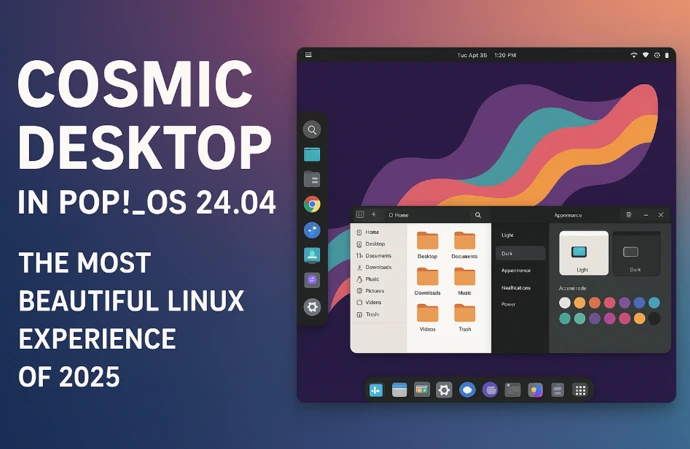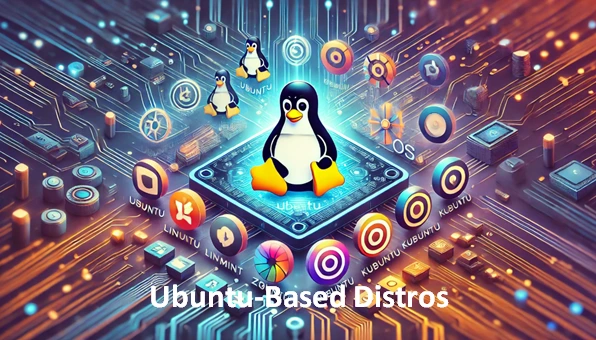
Top Ubuntu-Based Distros to Try in 2025
If you’re thinking about trying Linux or looking for a fresh take on your favorite operating system, Ubuntu-based distributions offer some of the best options out there. Ubuntu itself is well-known for its stability, security, and user-friendly nature, but its vast ecosystem of derivatives takes things even further. Whether you want a sleek macOS-like experience, a gaming powerhouse, or a lightweight system for an old laptop, there’s an Ubuntu-based distro for you.
In this post, we’ll explore some of the top Ubuntu-based distros to try in 2025. No matter your experience level—whether you’re a beginner, a developer, or just a curious tech enthusiast—you’ll find an option that suits your needs. Let’s dive in!
Top 10 Ubuntu-Based Distros to Try in 2025
1. Linux Mint – The Best for Beginners
Linux Mint has long been one of the most popular Ubuntu-based Linux distributions, and in 2025, it remains a top choice for users who want a balance of power, simplicity, and elegance. Whether you’re a beginner making the switch from Windows or a seasoned Linux user looking for a hassle-free experience, Linux Mint offers an intuitive and polished desktop environment.
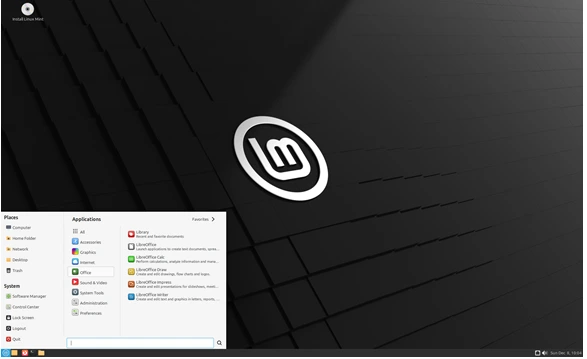
Why Choose Linux Mint in 2025?
Linux Mint has always been known for its user-friendly approach to Linux, and the latest releases continue to refine the experience. Here are some key reasons why Linux Mint stands out among Ubuntu-based distributions:
1. A Familiar and Polished Desktop
Linux Mint provides three main desktop environments: Cinnamon, MATE, and Xfce. The Cinnamon edition, in particular, is one of the most refined Linux desktop experiences available. It resembles the traditional Windows interface, making it an excellent choice for users transitioning from Windows to Linux.
2. Ubuntu’s Stability with Mint’s Improvements
Because Linux Mint is based on Ubuntu LTS (Long-Term Support) releases, it benefits from Ubuntu’s rock-solid foundation while offering additional enhancements like a more user-friendly software manager, multimedia codecs pre-installed, and its own suite of tools.
3. Out-of-the-Box Usability
Unlike some distributions that require additional setup after installation, Linux Mint is ready to use right away. It includes essential applications like LibreOffice, Firefox, VLC Media Player, and Thunderbird, along with proprietary drivers and media codecs that make it easy to play videos, music, and games without extra hassle.
4. Performance and Customization
Linux Mint is optimized for performance, ensuring smooth operation even on older hardware. The Xfce edition, for example, is lightweight and ideal for low-spec machines. Meanwhile, Cinnamon offers a modern look with plenty of customization options to tweak the desktop to your liking.
5. The Power of the Mint Tools
One of the distinguishing features of Linux Mint is its Mint Tools, which enhance usability and system management. Some key tools include:
- Update Manager – Provides easy and secure updates.
- Timeshift – A backup and restore utility that helps protect against system failures.
- Mint Software Manager – A better alternative to Ubuntu’s Snap-based store, offering a clean and fast way to install software.
Linux Mint 22.1 and Beyond
The latest version of Linux Mint, Linux Mint 22.1 (Xia), comes packed with new features and refinements. Users can enjoy an improved desktop experience, better Wayland support (for future display technology advancements), and enhanced Flatpak integration for seamless application installation.
As Linux Mint continues to evolve, we can expect it to maintain its reputation as the best Ubuntu-based alternative for those who want an elegant and easy-to-use operating system.
Linux Mint remains a top Ubuntu-based distro to try in 2025, especially for users who prioritize stability, usability, and familiarity. Whether you’re a beginner looking for an easy entry into Linux or an advanced user wanting a clean and reliable daily driver, Linux Mint is an excellent choice.
If you haven’t tried Linux Mint yet, give it a spin—it just might become your new favorite operating system!
2. Zorin OS – The Perfect Windows Alternative
When it comes to Ubuntu-based Linux distributions, Zorin OS stands out as one of the best choices in 2025. Whether you’re a Windows user looking for a smooth transition, a Linux enthusiast seeking a polished experience, or someone who needs a system that “just works,” Zorin OS has something for everyone. Let’s dive into what makes Zorin OS the top Ubuntu-based distro to try this year.
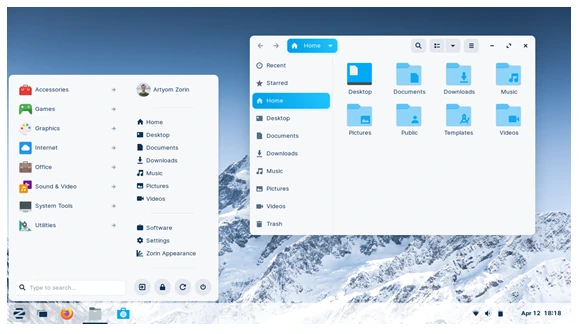
Why Choose Zorin OS in 2025?
Zorin OS isn’t just another Ubuntu derivative. It offers a refined, beginner-friendly experience with powerful features, all while maintaining the stability of Ubuntu. Here’s why you should consider giving it a try:
1. Windows-Like Interface with Customization Options
One of the biggest barriers for new Linux users is the transition from Windows or macOS. Zorin OS solves this with its Zorin Appearance tool, allowing users to switch between familiar desktop layouts, including Windows 11, macOS, and traditional GNOME.
2. Performance Optimizations for All Hardware
Whether you’re using an older laptop or a high-end workstation, Zorin OS is optimized to run smoothly. The Zorin OS Lite edition is designed specifically for older machines, breathing new life into aging hardware.
3. Out-of-the-Box Software Support
Zorin OS comes preloaded with all the essential applications you need, including:
- LibreOffice for document editing
- Firefox & Chrome support for web browsing
- Thunderbird for email management
- GIMP for image editing
- VLC for media playback
Additionally, it supports Flatpak, Snap, and AppImage, ensuring access to the latest applications.
4. Gaming and Windows Compatibility
Thanks to Zorin OS’s built-in support for Wine and Lutris, running Windows applications and games is easier than ever. Whether you’re installing Microsoft Office or playing Steam games, the compatibility layer makes it a breeze.
5. Security and Privacy
Zorin OS inherits Ubuntu’s robust security model, with:
- Regular security updates
- Built-in firewall and app permissions
- No data tracking or telemetry like some proprietary operating systems
6. Zorin Grid – Ideal for Businesses and Schools
For businesses and educational institutions, Zorin Grid makes managing multiple Linux machines simple. Administrators can remotely install software, apply policies, and monitor system status across multiple devices.
Which Version of Zorin OS Should You Choose?
Zorin OS comes in several editions tailored to different users:
- Zorin OS Pro – For users who want premium desktop layouts, productivity features, and professional tools.
- Zorin OS Core – The standard free edition, perfect for everyday users.
- Zorin OS Lite – Optimized for older hardware with XFCE desktop.
- Zorin OS Education – Preloaded with learning tools and educational software.
Installation and Getting Started
Installing Zorin OS is as easy as downloading the ISO file from zorin.com, creating a bootable USB, and following the guided setup. Whether you’re dual-booting with Windows or switching completely to Linux, the installation process is beginner-friendly.
If you’re searching for a polished, user-friendly, and powerful Linux distro in 2025, Zorin OS should be at the top of your list. Its seamless Windows-like experience, performance optimizations, and robust security make it one of the best Ubuntu-based distributions available today.
Are you ready to make the switch? Give Zorin OS a try and experience the best of Linux in 2025!
3. Pop!_OS – A Dream for Developers and Gamers
When it comes to Ubuntu-based Linux distributions, few are as polished and user-friendly as Pop!_OS. Developed by System76, this operating system has gained a reputation for being a go-to choice for developers, gamers, and Linux enthusiasts alike. If you’re looking for a powerful, efficient, and beautifully designed Ubuntu-based distro in 2025, Pop!_OS should be at the top of your list.
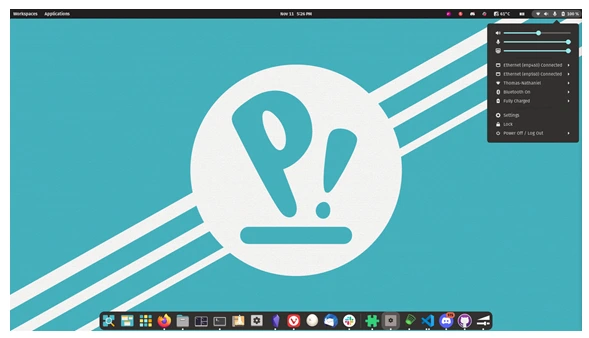
Why Choose Pop!_OS?
1. Performance and Efficiency
Pop!_OS is designed with performance in mind. It features a clean, lightweight desktop environment called COSMIC, which enhances productivity without unnecessary bloat. Unlike stock Ubuntu, Pop!_OS offers a more snappy experience with optimized resource management.
2. COSMIC Desktop Environment
System76 has invested heavily in its COSMIC desktop, providing an intuitive and highly customizable interface. Unlike GNOME’s default experience, COSMIC offers tiling window management, keyboard shortcuts, and smooth workflow optimizations, making multitasking a breeze.
3. Out-of-the-Box Hardware Support
One of Pop!_OS’s greatest strengths is its excellent hardware compatibility. Whether you’re using an NVIDIA or AMD GPU, System76 provides preconfigured ISO images that include the necessary proprietary drivers. This makes it one of the best Linux distributions for gaming and GPU-intensive workloads like AI, machine learning, and video editing.
4. Automatic Window Tiling
With built-in tiling window management, Pop!_OS makes it incredibly easy to organize your workspace efficiently. This feature is particularly useful for developers and power users who juggle multiple applications and terminal windows at once.
5. Pop!_Shop: A Better Software Center
Unlike Ubuntu’s default Snap Store, Pop!_OS features Pop!_Shop, a well-designed application store that provides access to traditional DEB packages, Flatpak apps, and third-party repositories. This means you can install software without dealing with slow Snap packages.
6. Enhanced Privacy and Security
Pop!_OS ships with full-disk encryption by default, ensuring your data remains secure. Additionally, it avoids unnecessary background telemetry, providing a more private computing experience compared to some other Linux distributions.
7. Optimized for Gaming
Pop!_OS has long been a favorite among Linux gamers, thanks to:
- Pre-installed drivers for NVIDIA GPUs
- Excellent Steam and Lutris support
- Great compatibility with Proton and Wine
- Better performance for gaming compared to vanilla Ubuntu
With gaming on Linux improving every year, Pop!_OS remains one of the best choices for those looking to ditch Windows while still enjoying their favorite games.
Is Pop!_OS the Right Choice for You?
If you’re searching for a fast, efficient, and user-friendly Ubuntu-based Linux distribution in 2025, Pop!_OS is one of the best options available. Whether you’re a developer, a gamer, or someone who simply wants a powerful and secure operating system, Pop!_OS offers a fantastic Linux experience.
With its sleek COSMIC desktop, excellent hardware support, and built-in productivity features, Pop!_OS remains a top contender in the Linux world. Give it a try and experience one of the best Ubuntu-based distributions available today!
4. Kubuntu – Ubuntu with KDE Plasma
Ubuntu has long been the go-to Linux distribution for both beginners and experienced users, but its official flavors offer unique experiences tailored to different preferences. One of the standout options is Kubuntu, an Ubuntu-based distro that features the KDE Plasma desktop environment. In 2025, Kubuntu remains one of the best Ubuntu-based distributions to try, thanks to its polished design, powerful customization options, and efficiency.
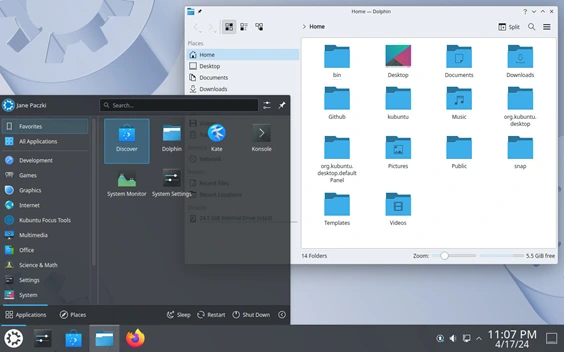
Why Choose Kubuntu in 2025?
Kubuntu combines the reliability of Ubuntu with the flexibility and modern aesthetics of KDE Plasma. Here’s why it should be on your list:
1. A Beautiful and Customizable Interface
The KDE Plasma desktop is one of the most visually appealing and customizable environments available. Unlike GNOME (the default Ubuntu desktop), Plasma offers a traditional layout with a taskbar, start menu, and system tray, similar to Windows.
Plasma also supports deep customization, allowing users to modify:
- Widgets and panels
- Window themes and icons
- System animations and effects
- Shortcuts and gestures
2. Performance and Resource Efficiency
Despite its feature-rich design, KDE Plasma has been optimized for performance. In 2025, Kubuntu continues to be an efficient choice, offering lower memory consumption compared to GNOME, making it a great option for both high-end and older hardware.
3. Access to Ubuntu’s Software Ecosystem
Since Kubuntu is built on Ubuntu, it retains full access to Ubuntu’s software repositories, meaning you can install thousands of applications using:
- APT package manager (sudo apt install package-name)
- Snap packages for the latest software versions
- Flatpak for additional software availability
4. Long-Term Support and Stability
Kubuntu follows Ubuntu’s release cycle, offering both:
- Regular releases (every six months) with the latest updates
- LTS (Long-Term Support) releases (every two years) with five years of security updates, making it a great choice for those who want a stable and secure system.
5. Ideal for Productivity and Creativity
Kubuntu comes pre-installed with KDE Applications, including:
- Dolphin File Manager – A powerful and intuitive file explorer
- Kdenlive – A free and professional-grade video editor
- Okular – A versatile document viewer
- Kate – A feature-rich text editor for developers
Additionally, Kubuntu is an excellent choice for professional workstations, gaming setups, and creative environments due to its smooth performance and customization options.
Installing Kubuntu 2025: A Quick Guide
If you’re interested in trying Kubuntu, follow these simple steps:
1. Download the latest Kubuntu ISO from kubuntu.org
2. Create a bootable USB drive using tools like Balena Etcher or Rufus
3. Boot from the USB and select “Try Kubuntu” or “Install Kubuntu”
4. Follow the installation wizard, selecting your preferred settings
5. Enjoy your new Kubuntu system!
Is Kubuntu Right for You?
If you love customization, efficiency, and a Windows-like desktop experience, Kubuntu is definitely worth trying in 2025. Whether you’re a beginner, gamer, developer, or just someone looking for a beautiful and functional Linux desktop, Kubuntu offers the best of both worlds: Ubuntu’s stability and KDE’s flexibility.
Are you planning to try Kubuntu this year? Let us know your thoughts in the comments!
5. Ubuntu Budgie – A Beautiful and Lightweight Experience
Linux distributions come in all shapes and sizes, but some stand out for their unique blend of aesthetics, performance, and ease of use. Ubuntu Budgie is one such distro that has been gaining traction among Linux enthusiasts. If you’re looking for a polished, modern, and efficient Ubuntu-based distribution in 2025, Ubuntu Budgie deserves a spot on your list.
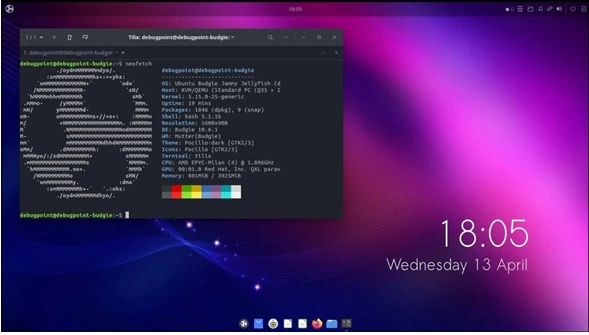
What is Ubuntu Budgie?
Ubuntu Budgie is an official Ubuntu flavor that features the Budgie desktop environment. Originally developed for Solus OS, Budgie offers a sleek and intuitive interface with a balance between traditional and modern design principles. Since becoming an official Ubuntu flavor, it has continued to refine its user experience while leveraging Ubuntu’s stability and software ecosystem.
Why Choose Ubuntu Budgie in 2025?
1. Elegant and Lightweight Desktop Environment
The Budgie desktop is known for its clean, clutter-free interface. It offers a polished design reminiscent of macOS, with a customizable Raven sidebar, dynamic workspaces, and a simple yet effective system tray. Despite its modern aesthetics, it remains lightweight and responsive, making it ideal for both old and new hardware.
2. Seamless Ubuntu Base
Since Ubuntu Budgie is built on Ubuntu, you get all the benefits of Ubuntu’s extensive software repository, long-term support (LTS) releases, and regular security updates. Whether you’re a casual user, a developer, or a professional, you can expect a reliable and secure experience.
3. Customization and Productivity
One of the standout features of Ubuntu Budgie is its deep customization options. The Budgie Desktop Settings tool allows users to tweak themes, icons, widgets, and window behaviors effortlessly. You can also extend its functionality with applets, offering additional tools like weather updates, workspace management, and quick notes.
4. Better Performance on Low-End Hardware
Unlike some heavier desktop environments like GNOME or KDE Plasma, Budgie is optimized for speed and efficiency. Even on older machines, it delivers a smooth user experience, making it a great choice for those looking to revitalize aging laptops or desktops.
5. Great Software Compatibility
Being part of the Ubuntu family, Ubuntu Budgie supports all Ubuntu-compatible software, including Snap, Flatpak, and AppImage packages. You can install popular applications like LibreOffice, VLC, GIMP, and VS Code with ease.
6. Active Community and Support
Ubuntu Budgie has a dedicated community that provides support through forums, Discord, and other social platforms. Additionally, since it’s an official Ubuntu flavor, users can also rely on Ubuntu’s broader community for troubleshooting and guidance.
Who Should Use Ubuntu Budgie?
Ubuntu Budgie is an excellent choice for:
- New Linux Users: Its intuitive interface makes the transition from Windows or macOS easy.
- Developers & Creators: The stability of Ubuntu with a lightweight yet visually appealing desktop is great for coding, writing, and designing.
- Minimalist Enthusiasts: If you prefer a clean, distraction-free workspace, Budgie’s elegant design will appeal to you.
- Users with Older Hardware: Its lightweight nature ensures smooth performance even on modest systems.
How to Get Started with Ubuntu Budgie
Getting started with Ubuntu Budgie is easy:
1. Download the ISO: Head over to the official Ubuntu Budgie website and download the latest version.
2. Create a Bootable USB: Use tools like Rufus (Windows) or Balena Etcher (Linux/macOS) to create a bootable USB drive.
3. Install Ubuntu Budgie: Boot from the USB, follow the installation steps, and enjoy your new desktop experience.
Ubuntu Budgie continues to shine as one of the best Ubuntu-based distributions in 2025. With its sleek design, customization options, and efficient performance, it caters to a wide range of users. Whether you’re looking for a daily driver, a secondary OS, or a fresh take on Ubuntu, Ubuntu Budgie is definitely worth trying.
6. elementary OS – The Most Beautiful Ubuntu-Based Distro
If you’re looking for a Linux distribution that combines beauty, simplicity, and performance, elementary OS should be at the top of your list in 2025. Based on Ubuntu, elementary OS provides a sleek, user-friendly experience that rivals macOS while maintaining the flexibility and power of Linux. Whether you’re a beginner or an experienced user who appreciates design and efficiency, this distro is worth checking out.
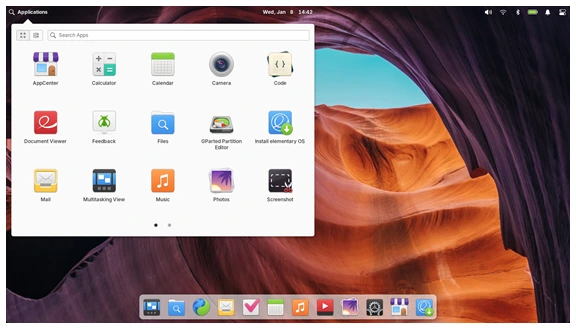
Why Choose elementary OS?
elementary OS has long been known for its focus on usability and aesthetics. It stands out among Ubuntu-based distributions for several reasons:
- Elegant UI: The Pantheon desktop environment delivers a clean, modern interface that feels intuitive.
- Privacy-Focused: Unlike many operating systems, elementary OS avoids invasive tracking and data collection.
- Curated App Store: The AppCenter offers open-source applications that integrate seamlessly with the system.
- Performance & Stability: Built on the solid foundation of Ubuntu LTS, it provides long-term support and reliability.
Features That Make elementary OS Shine
1. Pantheon Desktop: A macOS-Like Experience
One of the most striking aspects of elementary OS is its Pantheon desktop environment. It provides a refined, distraction-free workspace with a dock, a top panel, and a minimalistic design that’s easy to navigate. The system feels polished and consistent, making it a great choice for users transitioning from macOS or Windows.
2. AppCenter: A Different Approach to Software Management
Unlike traditional package managers, elementary OS features the AppCenter, which hosts applications specifically designed for the distro. The apps are open-source, well-integrated, and follow a pay-what-you-want model, supporting independent developers.
3. Multitasking & Productivity Enhancements
With features like Picture-in-Picture mode, window tiling, and multi-touch gestures, elementary OS makes multitasking seamless. These productivity tools improve workflow efficiency while keeping distractions minimal.
4. Security & Privacy First
- No Ads, No Tracking: Unlike proprietary systems, elementary OS respects user privacy.
- Automatic Updates: Security patches and updates are delivered promptly.
- Sandboxed Applications: Flatpak support ensures that apps are isolated for better security.
5. Customization & Flexibility
While elementary OS is designed to be simple, it still allows customization through third-party tools like Pantheon Tweaks. Users can change themes, icons, and window behaviors to suit their preferences.
Who Should Try elementary OS in 2025?
elementary OS is perfect for:
- Users who love a beautiful and minimalist desktop experience.
- Those who value privacy and security.
- macOS users looking to switch to Linux.
- Beginners who want a user-friendly Linux experience.
- Anyone who prefers a distraction-free workflow.
elementary OS continues to be one of the most polished and user-friendly Ubuntu-based distributions. With its elegant design, privacy-first approach, and focus on simplicity, it’s an excellent choice for those who appreciate aesthetics and efficiency in their operating system. If you haven’t tried it yet, 2025 is the perfect time to give elementary OS a spin!
Would you switch to elementary OS, or do you prefer another Ubuntu-based distro? Let us know your thoughts!
7. Ubuntu Studio – Ideal for Creatives
If you’re a creative professional or an enthusiast looking for the best Linux distribution for multimedia production, Ubuntu Studio is a must-try in 2025. This Ubuntu-based operating system is tailored for audio, video, and graphics professionals, offering a comprehensive suite of tools right out of the box. Whether you’re a musician, video editor, photographer, or graphic designer, Ubuntu Studio provides a seamless and powerful environment to bring your creative projects to life.
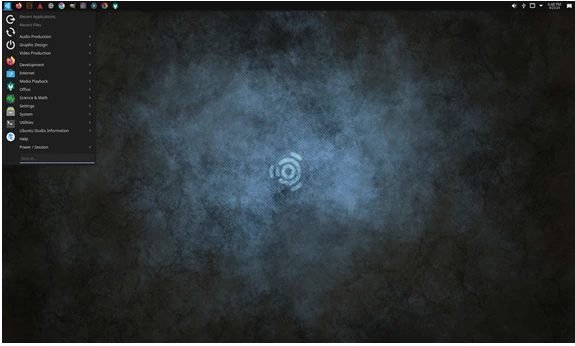
What Makes Ubuntu Studio Stand Out?
Ubuntu Studio is an official flavor of Ubuntu that is optimized for creative professionals. It comes with a real-time low-latency kernel, ensuring smooth performance for audio recording and production. Unlike standard Ubuntu, which requires additional setup for creative workflows, Ubuntu Studio delivers a ready-to-use environment packed with industry-standard software.
Here’s what makes Ubuntu Studio one of the best Ubuntu-based distros to try in 2025:
1. Real-Time Audio Processing
If you’re into music production, you know how crucial low-latency performance is. Ubuntu Studio comes with the low-latency kernel, ensuring minimal delays when recording and processing audio. It also includes JACK Audio Connection Kit, making it easy to manage audio routing between different applications.
2. Preinstalled Multimedia Software
Ubuntu Studio is loaded with creative software, saving you time from installing and configuring them manually. Here are some standout applications:
- Audio Production: Ardour, Audacity, Hydrogen, Qtractor
- Video Editing: Kdenlive, OBS Studio
- Graphics & Photography: GIMP, Krita, Darktable, Blender
- Publishing: Scribus, Inkscape
3. Ubuntu Studio Installer & Additional Workflows
A key advantage of Ubuntu Studio in 2025 is its flexibility. The Ubuntu Studio Installer allows you to install Ubuntu Studio’s packages on any Ubuntu-based system, transforming it into a multimedia powerhouse.
Additionally, Ubuntu Studio supports different workflows, such as:
- Audio Production
- Video Editing
- Graphic Design
- Photography
- Publishing
4. XFCE Desktop for Performance & Efficiency
Ubuntu Studio uses the lightweight XFCE desktop environment, ensuring a fast and efficient experience, even on older hardware. This makes it an excellent choice for users who want performance without sacrificing functionality.
5. Rock-Solid Ubuntu Foundation
Since Ubuntu Studio is based on Ubuntu, you get all the benefits of Ubuntu, including:
- Long-term support (LTS) versions for stability
- Access to a vast repository of software
- Strong community support and extensive documentation
- Security updates and improvements
Why Choose Ubuntu Studio in 2025?
In 2025, the demand for high-quality creative tools on Linux continues to grow. Ubuntu Studio stands out because it provides an all-in-one solution tailored for multimedia creators. Instead of spending hours setting up different software and configurations, you can install Ubuntu Studio and get started immediately.
Here’s why it’s a great choice:
- Out-of-the-box multimedia setup
- Low-latency audio and real-time processing
- A vast selection of professional creative tools
- Optimized for stability and performance
- Regular updates and improvements
If you’re looking for the best Ubuntu-based distro for creative professionals in 2025, Ubuntu Studio is an excellent choice. With its real-time audio processing, preinstalled creative tools, and efficient XFCE desktop, it’s perfect for musicians, video editors, graphic designers, and photographers.
Whether you’re an experienced artist or just starting, Ubuntu Studio provides everything you need to create, edit, and produce stunning multimedia projects with ease. So, if you’re looking for an Ubuntu-based distro that’s built for creativity, give Ubuntu Studio a try in 2025!
8. Xubuntu – A Lightweight and Fast Distro
When it comes to Ubuntu-based Linux distributions, Xubuntu stands out as a fantastic choice for users who want a lightweight, fast, and efficient system without compromising on functionality. As we step into 2025, Xubuntu continues to be a top contender for those who prefer the power of Ubuntu with a resource-friendly environment. Whether you’re using an old machine or just love the simplicity of the Xfce desktop, Xubuntu is definitely worth trying.
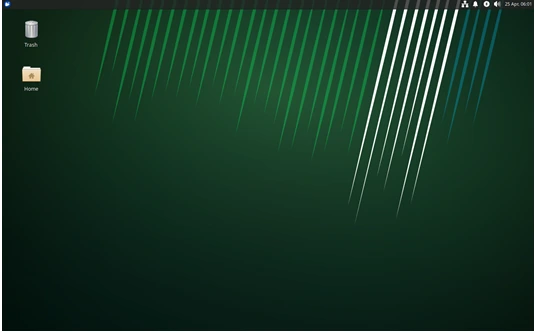
Why Choose Xubuntu in 2025?
Xubuntu is known for its balance between performance and usability. Unlike Ubuntu’s default GNOME desktop, which can be resource-intensive, Xubuntu uses the Xfce desktop environment. This makes it a perfect option for users who want a snappy experience even on older hardware.
Here are some key reasons to choose Xubuntu in 2025:
1. Lightweight and Fast
Xubuntu is designed to be lightweight, making it a great choice for older computers or systems with limited resources. The Xfce desktop environment consumes less RAM and CPU power compared to GNOME or KDE Plasma, ensuring that your machine runs smoothly without unnecessary lag.
2. Stable and Reliable
As an official Ubuntu flavor, Xubuntu benefits from the rock-solid base of Ubuntu, receiving regular updates, security patches, and long-term support (LTS) releases. If you’re looking for a system that is both stable and efficient, Xubuntu delivers on both fronts.
3. User-Friendly Experience
Xfce is known for its simplicity and ease of use. The interface is intuitive, customizable, and doesn’t overwhelm users with unnecessary features. Whether you’re a beginner or an experienced Linux user, Xubuntu offers a clean and straightforward experience.
4. Minimal Resource Usage
If you’re running an older laptop or desktop, Xubuntu is an excellent way to breathe new life into your machine. With its lower system requirements, you can perform daily tasks like web browsing, document editing, and multimedia playback without experiencing slowdowns.
5. Customizability and Flexibility
Xubuntu allows users to tweak and customize the interface to fit their workflow. You can easily change themes, adjust panels, and install various extensions to personalize your experience.
6. Access to Ubuntu’s Software Repositories
Since Xubuntu is based on Ubuntu, you get access to the vast Ubuntu software ecosystem. This means you can install thousands of applications from the Ubuntu Software Center, including productivity tools, development environments, and multimedia software.
Who Should Use Xubuntu?
Xubuntu is an excellent choice for a variety of users:
- Users with Older Hardware – If you have an aging laptop or desktop, Xubuntu can extend its life and provide a smooth experience.
- Minimalist Enthusiasts – If you prefer a simple, distraction-free computing environment, Xubuntu’s lightweight nature is ideal.
- Beginners to Linux – New users will find Xubuntu easy to navigate, with a familiar layout and helpful documentation.
- Developers and Power Users – Xubuntu provides a solid foundation with access to all the tools and packages available in the Ubuntu ecosystem.
Installing Xubuntu in 2025
Installing Xubuntu is straightforward. Simply head over to the official Xubuntu website and download the latest ISO file. You can create a bootable USB using tools like Balena Etcher or Rufus and install it on your machine following the guided setup process.
Minimum System Requirements:
- 1.5 GHz dual-core processor
- 2 GB RAM (4 GB recommended for smoother performance)
- 20 GB of free disk space
- A USB drive for installation
Xubuntu continues to be one of the best Ubuntu-based distributions available in 2025. Whether you need a lightweight system for an old computer or just prefer a fast and efficient desktop environment, Xubuntu is a fantastic choice. It combines the power of Ubuntu with the simplicity and speed of Xfce, making it a go-to option for many Linux users.
If you’re looking for a reliable, customizable, and resource-friendly Linux distro, Xubuntu is definitely worth trying this year!
9. Lubuntu – The Ultimate Lightweight Ubuntu-Based Distro
If you’re looking for a lightweight, fast, and efficient Ubuntu-based distro in 2025, Lubuntu should be at the top of your list. Designed with speed and simplicity in mind, Lubuntu is a fantastic choice for older hardware, low-spec systems, and users who prefer a minimal, no-frills Linux experience. In this blog post, we’ll explore why Lubuntu stands out among Ubuntu-based distributions and why you should consider giving it a try this year.
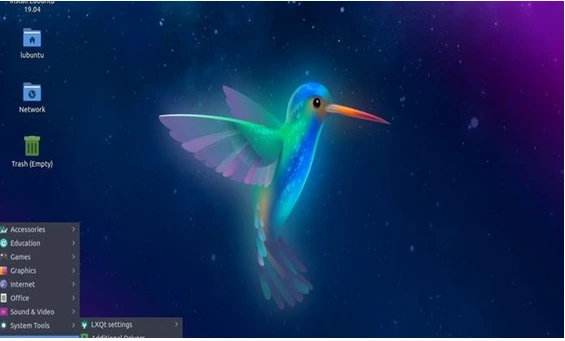
What Is Lubuntu?
Lubuntu is an official Ubuntu flavor that uses the LXQt desktop environment instead of the more resource-heavy GNOME or KDE. The goal of Lubuntu is to provide a lightweight, energy-efficient operating system that runs smoothly on a wide range of computers, including those with limited hardware capabilities.
While Lubuntu used to be based on LXDE, it switched to LXQt starting with version 18.10. This change brought a more modern and polished experience while still maintaining the lightweight philosophy that made Lubuntu popular.
Why Lubuntu Is a Top Ubuntu-Based Distro in 2025
1. Lightweight and Fast
One of the biggest advantages of Lubuntu is its minimal resource consumption. Compared to other Ubuntu-based distros, Lubuntu runs smoothly on older and lower-end hardware, making it an excellent choice for reviving aging laptops and desktops.
2. User-Friendly Experience
Despite being lightweight, Lubuntu provides a user-friendly experience. The LXQt desktop environment offers a clean and familiar interface, making it easy for Windows users to transition to Linux. The application menu, taskbar, and system tray resemble a traditional desktop layout, reducing the learning curve for new users.
3. Great for Low-End Hardware
If you have an older machine sitting around, Lubuntu can breathe new life into it. With lower RAM and CPU requirements compared to GNOME-based Ubuntu, Lubuntu ensures that even aging PCs remain useful in 2025. A system with as little as 1GB of RAM can still run Lubuntu reasonably well, while 2GB or more ensures a smooth experience.
4. Software and Ubuntu Repositories
Lubuntu benefits from the vast Ubuntu software ecosystem. This means you get access to the same software repositories, updates, and security patches as standard Ubuntu. You can install popular apps like Firefox, LibreOffice, and VLC without hassle.
5. Minimal Bloatware
Unlike some distributions that come packed with pre-installed software, Lubuntu sticks to the essentials. It provides a lightweight selection of apps such as FeatherPad for text editing, PCManFM for file management, and lightweight media players. This allows you to install only the software you need, keeping your system clean and responsive.
6. Energy Efficient
Lubuntu’s low resource usage translates to better energy efficiency. Whether you’re using an old laptop with a weak battery or simply want to reduce power consumption, Lubuntu helps extend battery life by consuming fewer system resources.
7. Stable and Reliable
As an official Ubuntu flavor, Lubuntu follows Ubuntu’s release cycle, providing stability and long-term support (LTS) versions. If you’re looking for a dependable system with consistent updates and security patches, Lubuntu is a solid choice.
Who Should Use Lubuntu?
Lubuntu is ideal for:
- Users with older or low-end hardware who need a lightweight operating system.
- Beginners transitioning from Windows who prefer a simple, traditional desktop experience.
- Minimalists who want a clean and efficient Linux environment.
- Developers and system administrators who need a lightweight distro for testing or running virtual machines.
- Anyone who values speed and efficiency over flashy features and animations.
How to Get Started with Lubuntu
Getting started with Lubuntu is easy:
- Download the ISO – Visit lubuntu.me and download the latest version.
- Create a Bootable USB – Use tools like Rufus (Windows) or Balena Etcher (Linux/macOS) to create a bootable USB drive.
- Install Lubuntu – Boot from the USB drive, follow the simple installation steps, and start enjoying your lightweight Linux system.
In 2025, Lubuntu remains one of the best Ubuntu-based distributions for users seeking speed, efficiency, and simplicity. Whether you’re trying to revive an old computer, need a lightweight OS, or just prefer a minimalistic experience, Lubuntu is a fantastic choice.
Have you tried Lubuntu before? What’s your experience with it? Share your thoughts in the comments below!
10. Raspberry Pi OS (Ubuntu-based variant) – Best for Raspberry Pi Users
Raspberry Pi has long been the go-to single-board computer for hobbyists, tinkerers, and even professionals looking to build compact yet powerful computing projects. While Raspberry Pi OS (formerly Raspbian) remains the official operating system, a new Ubuntu-based variant of Raspberry Pi OS has been making waves. If you’re looking for a feature-rich, well-supported Linux distro optimized for Raspberry Pi, this is one of the top Ubuntu-based distributions to try in 2025.
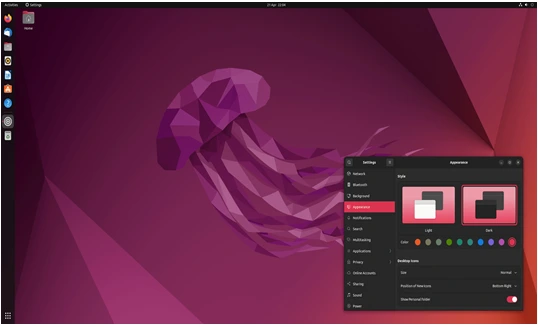
What is Raspberry Pi OS (Ubuntu-Based Variant)?
The Raspberry Pi OS (Ubuntu-based variant) is a Linux distribution designed specifically for Raspberry Pi devices, leveraging Ubuntu’s robust architecture while retaining optimizations for ARM-based hardware. Unlike the Debian-based standard Raspberry Pi OS, this version brings Ubuntu’s ecosystem, software repositories, and updates to the Pi platform, making it an excellent choice for developers, students, and Linux enthusiasts.
Why Choose Raspberry Pi OS (Ubuntu-Based)?
Here are some reasons why this Ubuntu-based Raspberry Pi OS is worth considering:
1. Ubuntu’s Stability and Long-Term Support (LTS)
This variant benefits from Ubuntu’s rock-solid stability and LTS releases, ensuring years of security updates and support. With Ubuntu at its core, the OS receives patches, bug fixes, and security updates regularly.
2. Optimized for Raspberry Pi Hardware
Unlike generic Ubuntu images, this OS is specifically tuned for Raspberry Pi’s ARM architecture. Performance enhancements ensure smoother operation, lower power consumption, and better resource management on devices like the Raspberry Pi 4 and 5.
3. Access to Ubuntu’s Software Ecosystem
Since this OS is built on Ubuntu, users gain access to its vast repository of software, including Snap packages, PPAs, and the latest open-source applications, making it more flexible than the standard Raspberry Pi OS.
4. Improved Desktop Experience
The Ubuntu-based Raspberry Pi OS offers better desktop experiences with support for GNOME, XFCE, and other modern desktop environments. This makes it an ideal choice for those using Raspberry Pi as a daily driver.
5. Built-in Support for Development and AI Workloads
With the rise of AI and IoT projects, this OS provides a robust development environment. It supports tools like Python, Docker, and TensorFlow out-of-the-box, making it an excellent choice for programmers and developers.
Who Should Use Raspberry Pi OS (Ubuntu-Based)?
- Developers looking for a reliable, up-to-date environment for coding and testing applications.
- Students and Educators who need a stable OS with access to educational tools and software.
- Tinkerers and Hobbyists interested in exploring AI, IoT, and automation projects.
- Users who prefer Ubuntu but want an OS optimized for Raspberry Pi hardware.
How to Install Raspberry Pi OS (Ubuntu-Based)?
- Download the Image: Head over to the official Raspberry Pi website or Ubuntu’s Raspberry Pi page to get the latest version of the OS.
- Flash the Image: Use tools like Raspberry Pi Imager or Balena Etcher to flash the OS onto a microSD card.
- Boot Up: Insert the SD card into your Raspberry Pi, power it on, and follow the setup process.
- Customize Your Experience: Install additional software, set up remote access, and configure the system according to your needs.
The Ubuntu-based Raspberry Pi OS is an exciting alternative for those who love the Raspberry Pi ecosystem but prefer Ubuntu’s package management, software availability, and extended support. Whether you’re a beginner or an advanced user, this OS offers a powerful, flexible, and well-supported platform for various applications. If you’re looking for an optimized, user-friendly Linux experience on your Raspberry Pi in 2025, this distribution should definitely be on your list.
Have you tried the Ubuntu-based Raspberry Pi OS? Let us know your thoughts in the comments below!
Final Thoughts
Ubuntu-based distros offer a wide variety of choices for different users, whether you’re looking for stability, customization, lightweight performance, or a macOS/Windows-like experience.
- If you’re a beginner, Linux Mint or Zorin OS is your best bet.
- For gamers and power users, Pop!_OS is an excellent choice.
- If you love customization, Kubuntu and Ubuntu Budgie are worth trying.
- For creators, Ubuntu Studio is a fantastic option.
- And if you’re running older hardware, Xubuntu or Lubuntu will keep things fast and smooth.
No matter your needs, there’s a perfect Ubuntu-based distro for you in 2025! So, go ahead, try them out, and let us know which one you like the most!
Disclaimer
This article is based on personal opinions and research as of 2025. While we strive to provide accurate and up-to-date information, Linux distributions frequently update and change. Users are encouraged to visit the official websites of the mentioned distributions for the latest updates, features, and system requirements. We do not endorse or have affiliations with any specific distribution mentioned in this post.
Also Read
Top Linux Distros for Math Enthusiasts in 2025 – Find Your Perfect OS!

